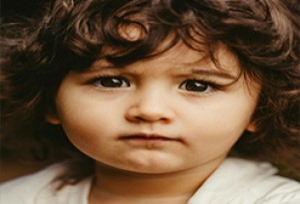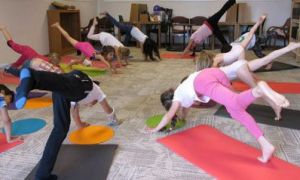

When celebrations are well thought out—integrating community input, respecting complexity, and linking meaningfully with the curriculum—they transform into powerful learning experiences. But when they become obligatory, surface-level gestures, they risk doing more harm than good by trivializing cultural significance. Here are some reflective questions you can ask to guide your decision on which significant cultural event to celebrate in an early childhood setting.
The following lists reflection questions designed to help educators examine and enhance the learning environment in early childhood settings.
Quality Area 4 focuses on staffing arrangements. The following questions are designed to help you critically evaluate how your service recruits, supports, retains, and empowers its educators to deliver high-quality, intentional interactions with children.
An integrated curriculum in early childhood education in Australia focuses on holistic learning, where different subject areas and developmental domains are connected rather than taught in isolation. This approach aligns with the EYLF and the National Quality Standard (NQS), ensuring that children's learning experiences are meaningful and interconnected.
The following lists reflection questions to guide programming and planning in early childhood education.
A: Educators can write meaningful reflections in early childhood by thoughtfully analyzing their teaching practices, children's learning experiences, and room interactions. Here are some effective strategies:
Use a Structured Reflection Framework: Methods like the Gibbs Reflective Cycle or Schön’s Model help educators systematically analyze their experiences.
Focus on Child Development: Reflect on how activities support cognitive, emotional, and social growth.
Incorporate Observations: Document specific moments that highlight children's learning progress or challenges.
Ask Guiding Questions: Consider prompts like “What worked well today?” or “How can I improve this activity next time?”
Connect Theory to Practice: Link reflections to educational theories or best practices to enhance teaching strategies.
Maintain a Reflection Journal: Writing regularly helps track growth and identify patterns in teaching.
Seek Peer Feedback: Discussing reflections with colleagues can provide new perspectives and insights.
Gibbs Reflective Cycle is a structured framework for reflection that helps individuals analyze their experiences and improve their learning or practice. Developed by Graham Gibbs in 1988, it consists of six stages:
Description – What happened? (Detail the experience.)
Feelings – What were you thinking and feeling?
Evaluation – What was good and bad about the experience?
Analysis – What sense can you make of the situation?
Conclusion – What else could you have done?
Action Plan—If it happened again, what would you do differently?
Guided questions can help educators and young learners engage in meaningful reflection. Here are some examples tailored for early childhood:
Personal Experiences: What was your favorite part of today, and why?
Emotional Awareness: How did you feel when you tried something new?
Problem-Solving: What was something tricky you faced today, and how did you solve it?
Social Interactions: Who did you play with today, and what did you learn from them?
Learning Moments: What is one thing you discovered today that made you curious?
Future Thinking: What would you like to try again tomorrow, and how can you make it even better?
Reflection on a Learning Experience in Early Childhood Education
Today, I observed a group of preschoolers engaging in a sensory play activity with water and different textured objects. Initially, some children hesitated to touch the materials, while others eagerly explored. As the activity progressed, I noticed how peer interactions encouraged hesitant children to participate.
One child, who was initially reluctant, observed their peers and eventually dipped their hands into the water. This moment highlighted the importance of social learning and peer influence in early childhood development.
Upon reflection, I realized that providing a variety of sensory experiences helps children develop confidence and curiosity. Moving forward, I plan to introduce more open-ended sensory activities and observe how different children respond. Additionally, I will encourage peer collaboration to foster a supportive learning environment.
Educators Guide To Critical Reflections
A Guide To Writing A Daily Reflection
Critical Reflections In The Assessment and Rating Process
Reflection Vs Critical Reflection
Educational Leader Guide: How to Lead Reflective Practices in Your Team
A: Writing an observation for child learning development can feel tricky at first, but once you get the hang of it, it becomes much easier! The key is to focus on what you see and hear, rather than interpreting how the child might feel. Here are some steps to help you improve:
A: A jotting observation is a concise and informal way to document significant events, behaviors, or interactions. These observations are typically brief, focusing on specific moments rather than a sequence of events. They provide a snapshot of a child's interests, development, or skills and can be recorded in various formats, such as notebooks or post-it notes.
MTOP (My Time, Our Place) Outcome 1 focuses on children having a strong sense of identity. This means that in school-age care settings, children develop a sense of belonging when they feel accepted and can build relationships with peers and educators. Their confidence, motivation, and self-identity are shaped by their interactions with others.
Quality Area 5: Relationships with Children is fundamental in early childhood education as it lays the groundwork for a nurturing and supportive learning environment. Here are some key terms and concepts central to this quality area.
 As an Educator in Australia, your pay rate falls under the Children’s Services Award 2010. This award states the minimum amount that an employer can… Read More
As an Educator in Australia, your pay rate falls under the Children’s Services Award 2010. This award states the minimum amount that an employer can… Read More
 When working as a qualified Early Childhood Teacher (with a university degree) within a service, your rate of pay will come from the Educational Services… Read More
When working as a qualified Early Childhood Teacher (with a university degree) within a service, your rate of pay will come from the Educational Services… Read More
 When working as a Diploma Qualified Educator your pay rate is from the Children's Services Award 2010. This Award states your minimum rate of pay… Read More
When working as a Diploma Qualified Educator your pay rate is from the Children's Services Award 2010. This Award states your minimum rate of pay… Read More
 When working as a Cert 3 Qualified Educator, your pay rate is from the Children's Services Award 2010. This Award states your minimum rate of… Read More
When working as a Cert 3 Qualified Educator, your pay rate is from the Children's Services Award 2010. This Award states your minimum rate of… Read More
 Educational Leaders play a crucial role in their early childhood service by ensuring that the educational program aligns with best practices and supports the holistic… Read More
Educational Leaders play a crucial role in their early childhood service by ensuring that the educational program aligns with best practices and supports the holistic… Read More
 In early childhood education and care, ratios are more than a technicality—they are a frontline safeguard. Every child deserves responsive supervision, emotional connection, and developmental… Read More
In early childhood education and care, ratios are more than a technicality—they are a frontline safeguard. Every child deserves responsive supervision, emotional connection, and developmental… Read More
 With the new national child safety reforms kicking in on 1 September 2025, early childhood services like yours have a real opportunity to lead the… Read More
With the new national child safety reforms kicking in on 1 September 2025, early childhood services like yours have a real opportunity to lead the… Read More
 Here’s a comprehensive Mobile Phone and Smart Watch Policy tailored for early childhood education and care (ECEC) services in Australia, aligned with the latest 2025… Read More
Here’s a comprehensive Mobile Phone and Smart Watch Policy tailored for early childhood education and care (ECEC) services in Australia, aligned with the latest 2025… Read More
 The Sea of Fish Challenge is a national initiative that invites children, educators, families, and communities to create and display fish artworks as a symbol… Read More
The Sea of Fish Challenge is a national initiative that invites children, educators, families, and communities to create and display fish artworks as a symbol… Read More
 Emotional awareness and self-regulation are crucial skills for young children, helping them navigate social interactions, manage their feelings, and develop resilience. The following article provides… Read More
Emotional awareness and self-regulation are crucial skills for young children, helping them navigate social interactions, manage their feelings, and develop resilience. The following article provides… Read More

When children observe, interact and care for an animal it can provide an enriching experience...
See more...
Introducing diversity through books is a fantastic way to help children understand and appreciate different cultures...
See more...
Like adults, children have to deal with their own stress in life. Moving house, starting...
See more...© 2009-2025 Aussie Childcare Network Pty Ltd. All Rights Reserved.

